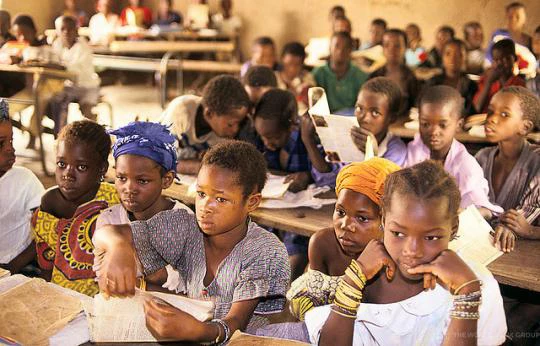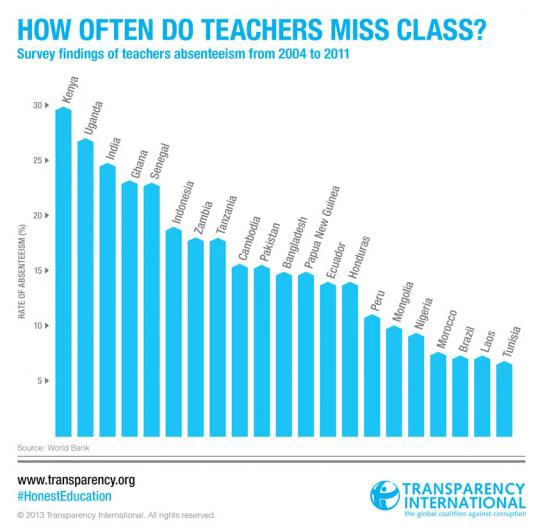Today, Transparency International releases The Global Corruption Report: Education, and its message is clear: When there is corruption in education, the poor and disadvantaged suffer most. Education is critical if we are to meet the goal of ending poverty and boosting shared prosperity by 2030. Corruption undermines the equally critical goal of ensuring that all children and youth go to school and learn.
While corruption hampers all development efforts, it is a debilitating presence in the education sector. In my contribution to the report, I highlight the damage from corruption in one of the most important aspects of education, teacher absenteeism.
I show that the evidence confirms that teacher absenteeism is a significant problem in many countries, wasting financial resources and shortchanging young students.
Teacher absenteeism is one of the most serious forms of corruption in education. While there are many valid reasons for a teacher to be away from the classroom, some absences are clearly illegitimate, such as when teachers ‘moonlight’ – working elsewhere when they should be teaching. Even official absences may be the cause of inefficiency or corruption upstream. In many cases officials rely on teachers for election campaigning.
Regardless of the reason, the system is failing the child when there are high levels of teacher absences. Even non-corrupt absences take a toll on student learning.
A shocking level of teacher absenteeism exists in the developing world. At the primary school level, teacher absenteeism ranges from 11% to 30%. In Uganda, where the absenteeism rate is 27%, many teachers who were present were not actually teaching. In Ecuador, 53% of teacher absence was unexcused.
In Bangladesh, the main grounds for teacher absenteeism were ‘official school-related duties’ followed by ‘official leave,’ whereas in India, annual leave, medical leave and other sanctioned reasons accounted for only 10% of absenteeism. In Indonesia, one-third of teachers were found to be absent because of illness or legitimate leave. Regardless of the reason, the real losers are the students who yearn for an education but end up receiving no instruction.
Teacher absenteeism accounts for the loss of up to one-quarter of primary school spending. This amounts to $16 million annually in Ecuador and $2 billion a year in India. Moreover, the reduction in teaching time negatively influences the overall quality of education. This loss in funding hurts those students from disadvantaged backgrounds for whom school is the only avenue for economic and social advancement.
There is very little evidence that higher salaries lead to better attendance, however. Contract teachers have the same or higher absence rates. Compared to public school teachers, though, private school teachers are absent less, even though contract and private school teachers alike take home much less pay than their regular civil service public school teacher counterparts.
Formal supervision and disciplinary action may decrease absenteeism. Schools with a greater likelihood of visits by senior officials have lower rates of teacher absence. The studies showed that, in schools in which directors impose disciplinary action, for example, teachers are more likely to be present.
Better oversight of schools is another measure that could help reduce corrupt practices. This monitoring could take the form of documenting the prevalence of ghost teachers, beefing up inspections, and increasing the quality and volume of audits. One option is the hiring of external personnel to monitor attendance. This person can either reward teachers who teach regularly or penalize those who miss significant numbers of classes.
Going forward, priority issues include the need for more monitoring, further research and comparable information that can help analyze situations of absenteeism in multiple countries. Additional experimentation and an evaluation of positive approaches are also necessary. However, the global community will not be successful in promoting learning for all or ending poverty if there is no teacher present when students enter the classroom.
Follow the World Bank’s education team on Twitter at @WBG_Education.
Related:




Join the Conversation